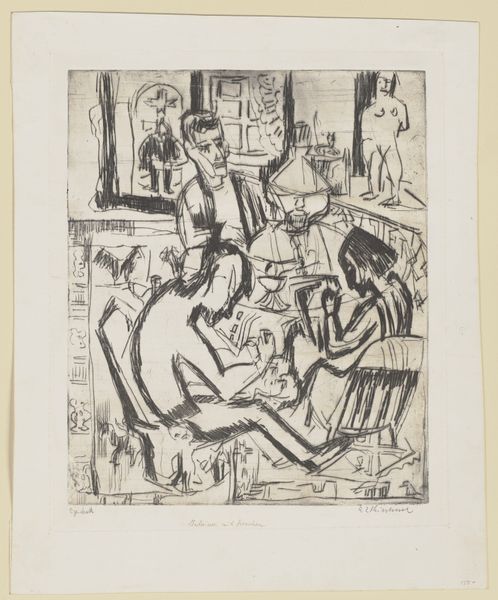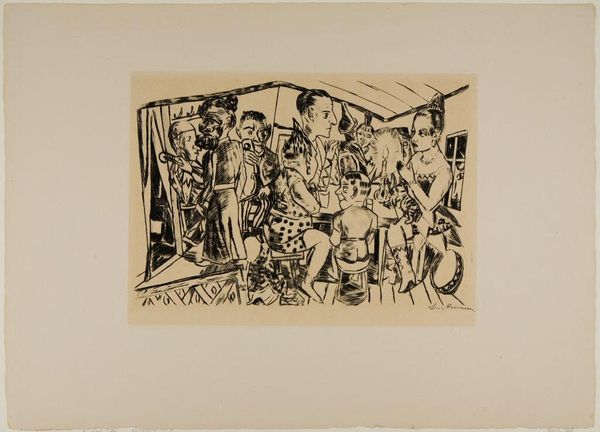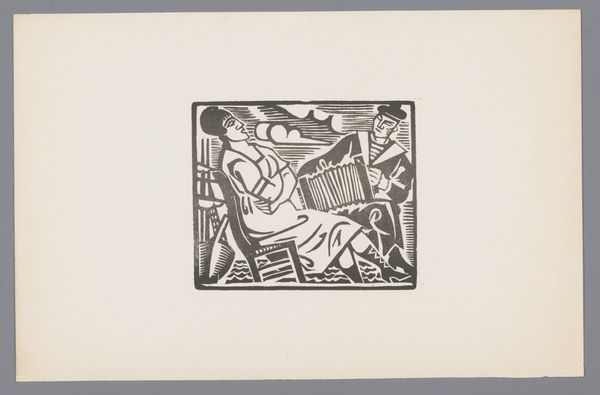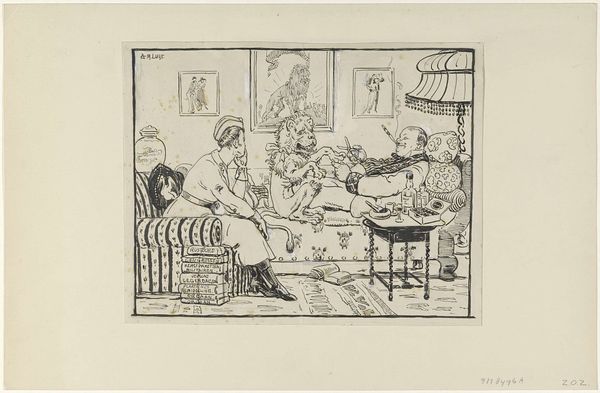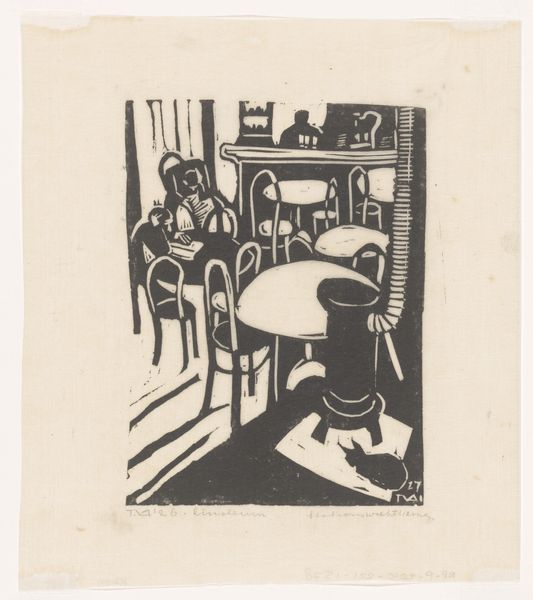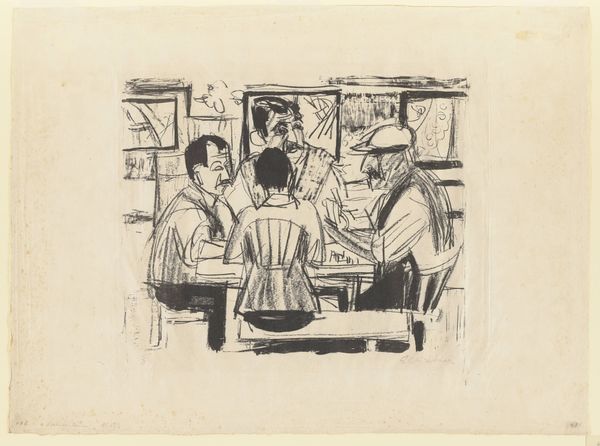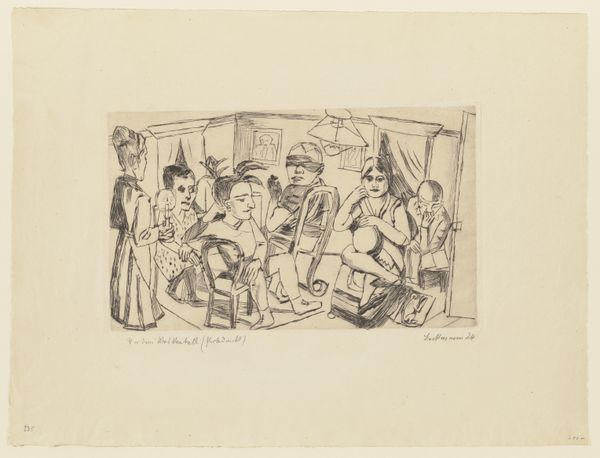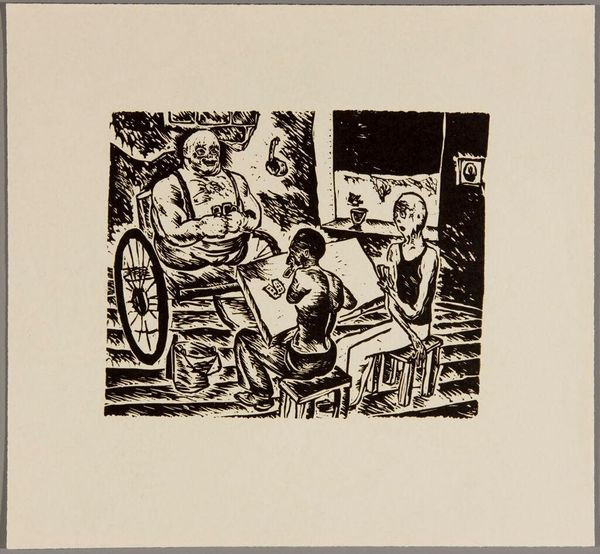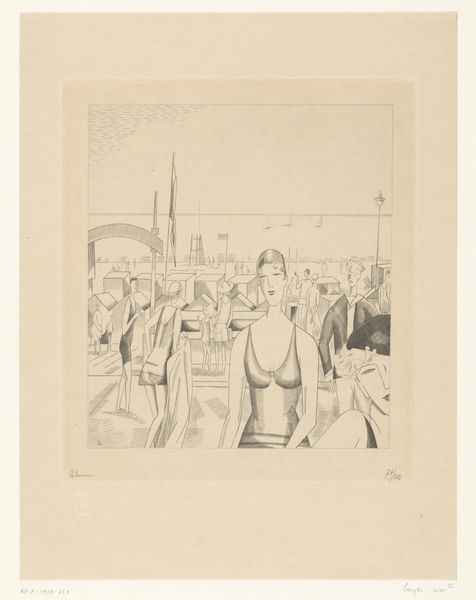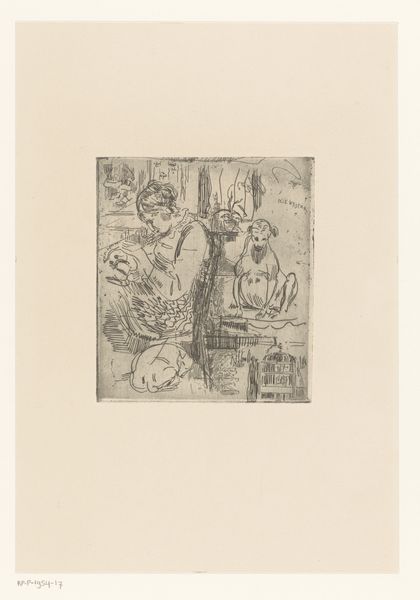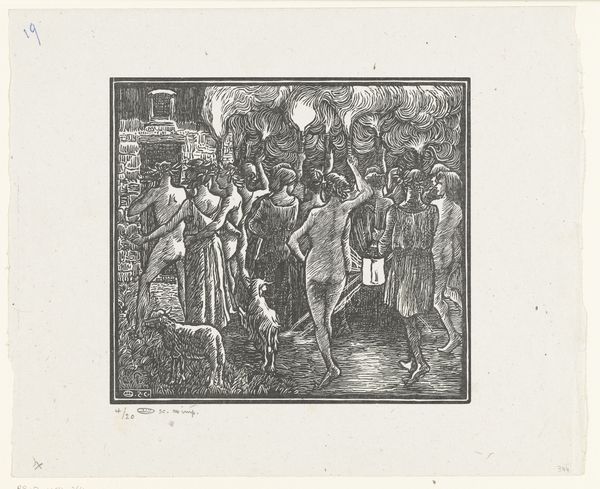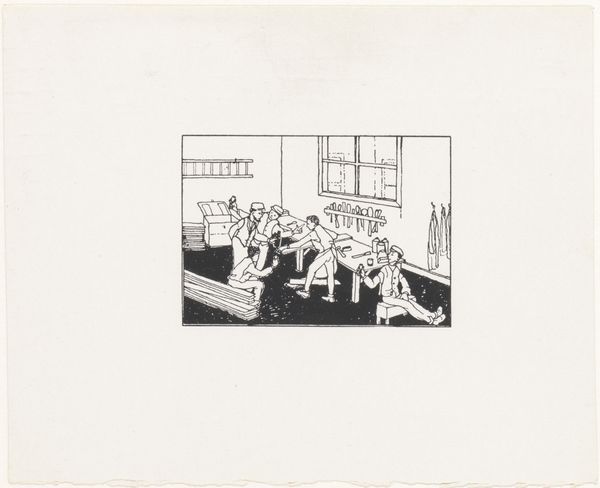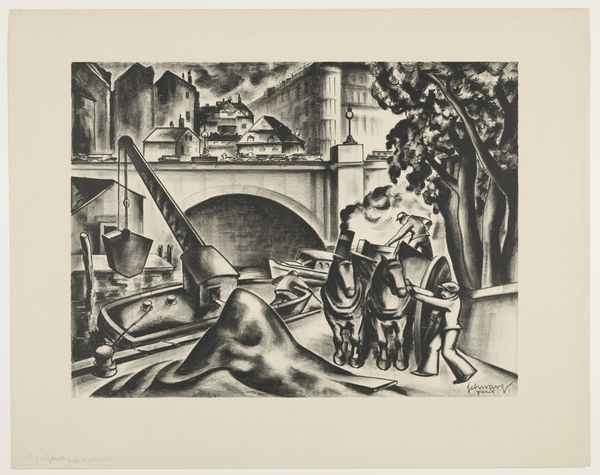
graphic-art, print, linocut
#
graphic-art
#
cubism
# print
#
linocut
#
figuration
#
linocut print
#
genre-painting
#
monochrome
Dimensions: height 230 mm, width 361 mm
Copyright: Rijks Museum: Open Domain
Editor: Here we have "Two Sailors and Three Women in a Cafe," a 1925 linocut print by André Lhote. I find it quite striking, especially the contrast between the angular figures and the relaxed scene. How do you interpret this work? Curator: It’s a fascinating glimpse into the social landscape of the 1920s. Lhote, working in the Cubist style, offers us a fragmented perspective, not just visually, but also perhaps on the era's evolving gender dynamics and social hierarchies. Note how the sailors, symbols of masculine authority, are positioned amongst these women, who appear equally self-possessed. What does that visual interplay suggest to you? Editor: I see a sense of modernity, maybe even a subtle challenge to traditional gender roles, within a composition that also feels somewhat detached and observational. It’s like Lhote is documenting a shifting social scene. Curator: Exactly. Think about the historical context: post-World War One, changing societal expectations, and the rise of the “New Woman.” How might Lhote's Cubist fragmentation reflect the destabilization of these social structures? And what about the Cafe itself, as a site of intersectionality and exchange? It’s a fascinating piece to consider in light of contemporary feminist theory and critical race studies too – who has access to these spaces, and at what cost? Editor: So it’s not just about the visual style but also about unpacking the social narrative embedded in the image. I hadn't considered it in terms of who is being represented, and why. Curator: Precisely. By examining the cultural context, we can understand how art acts as a powerful reflection of, and sometimes intervention in, prevailing power structures. Editor: I'll definitely look at it differently now, keeping in mind the broader social and political conversations happening at the time. Thank you. Curator: And thank you; you have sharpened my attention to the setting, which suggests narratives of its own.
Comments
No comments
Be the first to comment and join the conversation on the ultimate creative platform.
